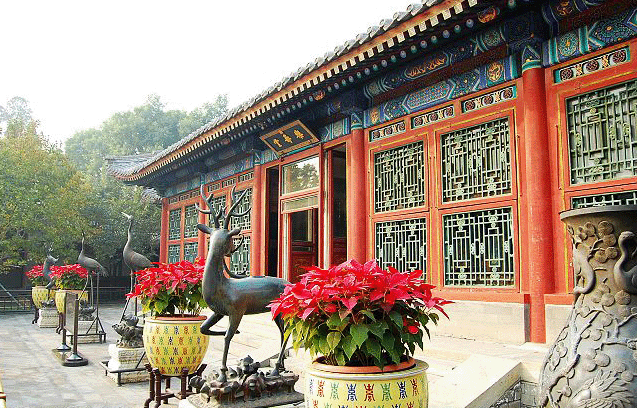
The Summer Palace is a monument to classical Chinese architecture, in terms of both garden design and construction. Borrowing scenes from surrounding landscapes, it radiates not only the grandeur of an imperial garden but also the beauty of nature in a seamless combination that best illustrates the guiding principle of traditional Chinese garden design: “The works of men should match the works of Heaven”. In December 1998, UNESCO included the Summer Palace on its World Heritage List with the following comments: 1) The Summer Palace in Beijing is an outstanding expression of the creative art of Chinese landscape garden design, incorporating the works of humankind and nature in a harmonious whole; 2) The Summer Palace epitomizes the philosophy and practice of Chinese garden design, which played a key role in the development of this cultural form throughout the east; 3) The imperial Chinese garden, illustrated by the Summer Palace, is a potent symbol of one of the major world civilizations.
The Summer Palace, originally named Qingyi Yuan or the Garden of Clear Ripples, was first constructed in 1750. It was razed to the ground by the Anglo-French Allied Forces in 1860. The Government of the Qing Dynasty started to rebuild it in 1886 with funds that it had misappropriated from the Imperial Navy and other sources. Renamed two years later as Yihe Yuan or the Garden of Health and Harmony, it was supposed to serve as a summer resort for the Empress Dowager Cixi. Known also as the Summer Palace, it was ravaged by the Allied Forces of the Eight Powers that invaded China in 1900. The damage was repaired in 1902. Since the founding of the People’s Republic of China, the Summer Palace has undergone several major renovations. Its major attractions such as the Four Great Regions, Suzhou Street, the Pavilion of Bright Scenery, the Hall of Serenity, the Wenchang Galleries and the Plowing and Weaving Scenery Area have been successively restored.
The Summer Palace is a monument to classical Chinese architecture, in terms of both garden design and construction. Borrowing scenes from surrounding landscapes, it radiates not only the grandeur of an imperial garden but also the beauty of nature in a seamless combination that best illustrates the guiding principle of traditional Chinese garden design: “The works of men should match the works of Heaven”. In December 1998, UNESCO included the Summer Palace on its World Heritage List with the following comments: 1) The Summer Palace in Beijing is an outstanding expression of the creative art of Chinese landscape garden design, incorporating the works of humankind and nature in a harmonious whole; 2) The Summer Palace epitomizes the philosophy and practice of Chinese garden design, which played a key role in the development of this cultural form throughout the east; 3) The imperial Chinese garden, illustrated by the Summer Palace, is a potent symbol of one of the major world civilizations.
http://blogtai.okokokok.net/publish.html
Using WeChat? Scan QR Code or Press the Fingerprint Below ↓
--- (Or ADD WeChat ID: OKOKOKOKnet)
